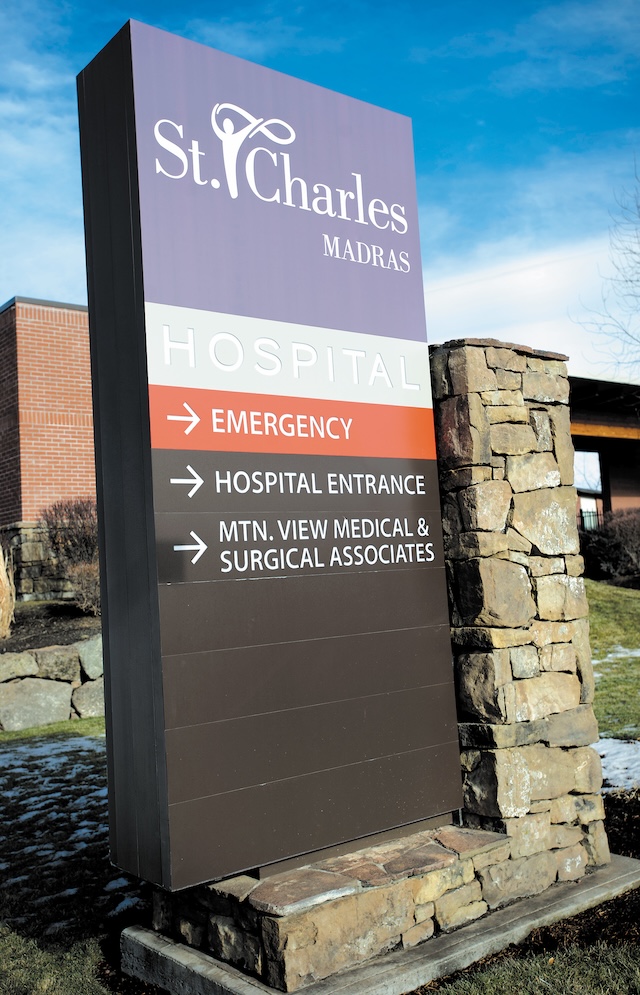Bend clinic makes new treatments available for circulation problems
Published 5:00 am Sunday, August 7, 2005
After 23 hours of sitting on airplanes from Italy back to Redmond in October, Peggy Privratsky experienced pain in her legs and couldn’t walk quite right.
The varicose veins that had plagued her for years became inflamed from the long period of inactivity she endured when returning from her vacation. Small blood clots formed within the veins in her legs, and Privratsky was diagnosed with phlebitis, or inflammation of the veins.
Trending
She was told there wasn’t much to be done about the problem but to elevate her leg, take an anti-inflammatory medication and wait for improvement.
Varicose veins, thought to affect more than 40 million Americans, can cause pain, swelling, embarrassment and inconvenience. Two local physicians have built a comprehensive vein institute to give people like Privratsky a one-stop place to go for treatment of vein problems.
”Phlebitis can be very painful,” Privratsky said. ”I was told to go on bed rest, elevate my leg and stay off my feet. I’m a pharmacist and we’re on our feet all the time, running around the pharmacy.”
At that point, Privratsky said, she decided to figure out a way to treat her varicose veins. The dark, knotted blood vessels in her legs were likely caused by a weakening of valves within the vein, causing blood to flow backward and pool in the vessels.
”I was told, ‘Your veins are really bad. This is going to happen from time to time. That’s the way it is,’” Privratsky said. ”I was kind of depressed.”
Then, Privratsky learned about Drs. Andrew Jones and Ed Boyle, two Bend Memorial Clinic surgeons, who planned to start a comprehensive vein treatment institute in Bend.
Trending
Jones said he and Boyle wanted to build a center where all types of vein treatment – from cosmetic procedures for spider veins to laser treatment for varicose veins – could be performed. They went through training in Florida to do endovenous laser treatment and began treating patients with the relatively new technology at the institute in June.
Privratsky eagerly signed up to be the Vein Institute at BMC’s first endovenous laser treatment patient.
”It’s immediate. When you take the bandages off, those veins are gone,” Privratsky said. ”There is probably a whole group of people out there like me who have had an incident and had no idea this technology was available – and it’s available in Bend.”
Using a local anesthetic, Jones numbed Privratsky’s leg and inserted a small catheter with a laser tip into a major vein. Watching the catheter through the use of a vascular ultrasound, he manuevered the laser through her vein. Once it was in position, Jones turned the laser on and began ablating, or burning, the vein with the laser as he pulled the catheter back out.
”It basically seals the inside of this vessel from the inside out,” Boyle said. ”It’s essentially the same operation as the vein stripping, except it’s one pinprick.”
Traditionally, Boyle said, varicose veins have been treated through a surgery known as ”vein stripping.” Surgeons would make incisions near the groin and also near either the knee or the ankle and actually remove the vein in a process often referred to as ”stripping and ripping.”
Debbie Taylor, 49, of Bend, said she had a varicose vein stripped from her leg nearly 10 years ago and decided recently to try the endovenous laser treatment on her other leg.
”On the other leg, I had the conventional treatment done. … It took me a lot longer to recover. It was a lot worse,” she said. ”I had the (laser) procedure done at about 9 a.m., and by 11 a.m. I was walking out of there.”
Along with the endovenous laser treatment, Boyle and Jones are using several other procedures to treat varicose and spider veins, some of which are also performed by other surgeons in Central Oregon. In some cases, they use ambulatory phlebectomy, where small incisions are made and a hook is used to pull a vein out of the leg. For the more cosmetic problems with spider veins, Boyle and Jones use what’s known as sclerotherapy to inject a chemical into the vein causing it to seal shut and be absorbed into the body.
”I always try to find out from a patient if this is cosmetic or is it an issue of medical concern,” Boyle said. Varicose veins become a medical concern when they cause swelling and throbbing in the legs with prolonged standing or when they cause the skin around the vein to itch or develop sores.
Cosmetic vein treatment is typically not covered by insurance companies, Boyle said, but varicose vein treatment that is medically necessary is usually covered. Sclerotherapy typically costs about $400, he said, and endovenous laser treatment is more expensive, running into several thousands of dollars.
If her insurance hadn’t covered the procedure, 28-year-old Sarah Sells of Bend said, she would not have had her varicose veins treated at BMC. But, because the bulging vein caused her left leg to ache by the end of a workday and the skin around it was often irritated, her insurance company paid for the procedure.
The cosmetic effect, Sells said, was an added bonus.
”I feel so much better about wearing dresses and shorts and going out in public and stuff because I don’t have this huge, bulging, ugly vein kind of thing,” Sells said. ”I would definitely recommend it for anybody, either young or old, that has large varicose veins.”
To contact the Vein Institute at BMC, call 318-3142.








